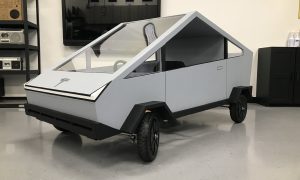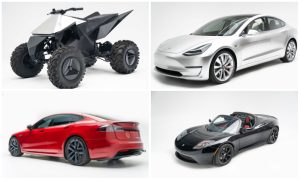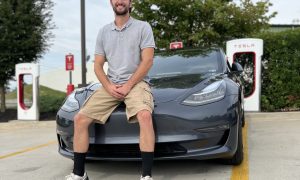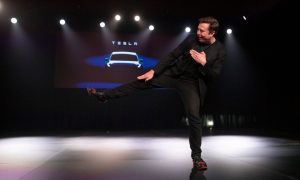News
NHTSA says your Tesla can’t be this quiet starting Sept., 2019
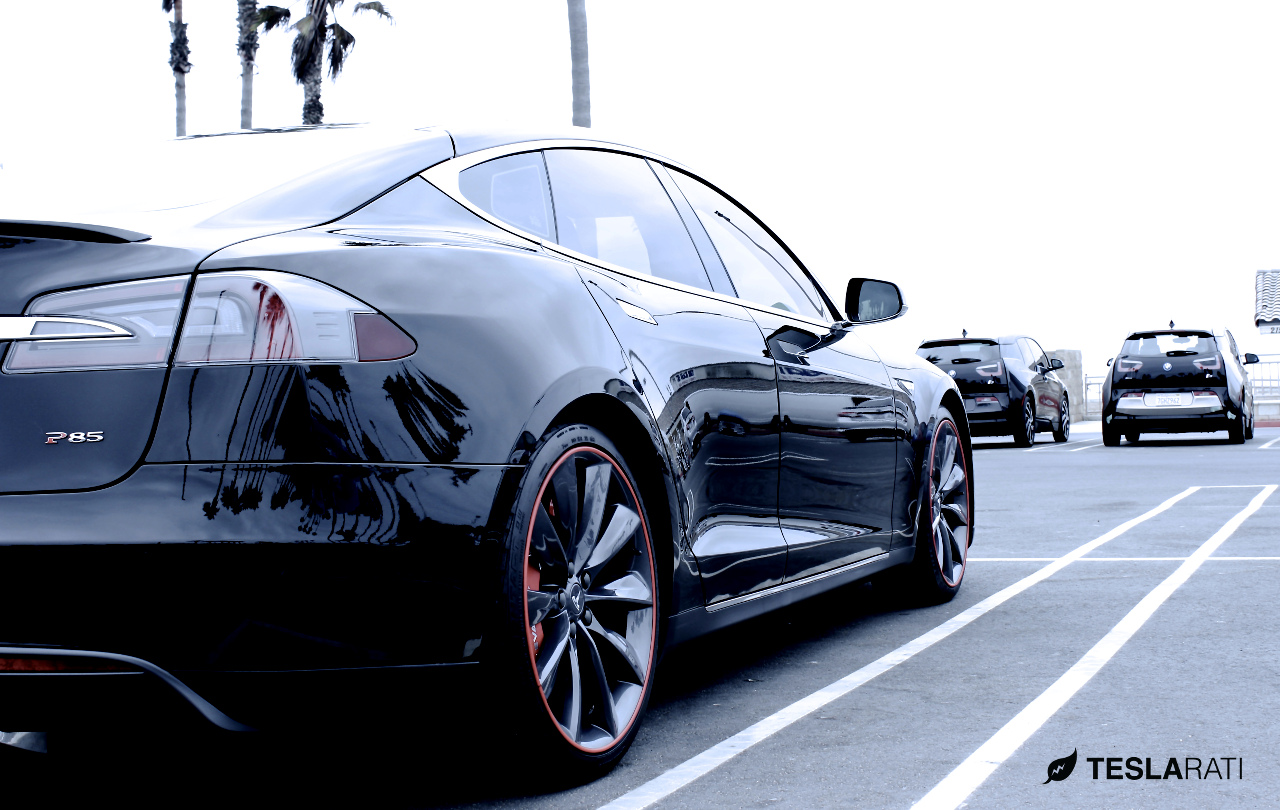
We at Teslarati are all in favor of making vehicles as safe as possible. Indeed, in our research and analysis of Teslas, we were proud early on in 2013 when the National Highway Traffic Safety Administration (NHTSA) awarded the Tesla Model S a 5-star safety rating, not just overall, but in every subcategory without exception. It was so safe, in fact, that the all-electric sedan broke the testing equipment at an independent commercial facility. Fast-forward to 2015. The Model X was the first SUV to be five-star in every category, according to Tesla CEO Elon Musk. It even won the prestigious Golden Steering Wheel (Das Goldene Lenkrad) award for best SUV this year.
Safety is important and should be primary to any driving situation. It should prevail over luxury features, style, and even comfort. However, a new NHTSA regulation that purports to target safety in its language is little more than a superficial gesture within a larger framework of driver, passenger, and pedestrian concerns.
Federal Motor Vehicle Safety Standard No. 141, which will begin on September 1, 2019, requires all newly manufactured hybrid and electric light-duty vehicles to make an audible noise at speeds below 19 mph. The sound requirement has been designed to help pedestrians who are blind, have low vision, cyclists, and other pedestrians to detect the presence, direction, and location of hybrids and EVs traveling at low speeds. At higher speeds, the sound alert will not be required because other factors, such as tire and wind noise, seem to provide adequate audible warning to pedestrians and will not be the subject of this regulation.
“We all depend on our senses to alert us to possible danger,” said U.S. Transportation Secretary Anthony Foxx. “With more, quieter hybrid and electrical cars on the road, the ability for all pedestrians to hear as well as see the cars becomes an important factor of reducing the risk of possible crashes and improving safety.”
Creating a social environment in which all individuals — especially those with disabilities, underrepresented groups, children, and the elderly — are physically and psychologically welcomed and safe is absolutely paramount to a healthy community. Manufacturers and drivers of hybrids and EVs do have a responsibility to contribute to such an environment.
Yet, clearly, we have a generation who has been accustomed to the sounds and smells of internal combustion engines. Wouldn’t driver and pedestrian education be a more efficacious way to ensure that hybrids and EVs do not pose a safety threat? Daniel Kahneman’s (2013) work, Thinking Fast and Slow, suggests that innovative products require a higher degree of learning than existing products. Education to help EV drivers and individuals who do not have personal access to hybrids and EVS, thus, who have not built in conscious mechanisms toward the awareness of hybrids and EVs in traffic, would have longer lasting and more permanent results.
Making the case for educating pedestrians
As the general population increases its awareness of the risks of pollution to both health and the environment, the internal combustion engine has become less desirable. As a result, battery-powered, fuel-cell electric, and hybrid vehicles are technologically viable alternatives to the internal combustion engine. And they’re beginning to take on a significant segment of the U.S. vehicle market.
Essentially, an internal combustion engine works like a cannon. The sound that results is formidable and part of our collective U.S. psyche. It is ingrained in our psychological expectations of what an engine should be. Electric motors, however, make very little noise compared with an internal combustion engine. Research on the safety implications of quiet electric vehicles has mostly focused on pedestrians’ acoustic perception of EVs and suggests that EVs compromise traffic safety. However, Cocran & Krems‘ 2013 research determined that, based on gained individual experience, drivers adjust their evaluation of noise-related hazards. Some statistical observation studies in literature indicate that hybrid or EV drivers intend to be more careful, less risk takers in traffic (Horswill and Coster 2002). Thus, it makes sense to increase the awareness factors for everyone — EV drivers and pedestrians — to create more robust safe traffic situations when EVs are added to the vehicle mix.
Adding to the sound mix
Principles to increase awareness of hybrids and EVs have generally focused on alerts, or sounds that indicate the presence of an EV. Other principles, such as orientation mechanisms, which make it possible to determine where the vehicle is located, roughly how fast it is going, and whether it is moving toward or away from the listener, extend beyond mere white or overt noises.
Education transcends any of these physical additions to a hybrid or EV. Hybrid and EV drivers as well as pedestrians should be exposed to new conceptual thinking about the place of EVs in traffic situations. Alongside the new federal safety standard that requires low speed noise, hybrid and EV automakers can build in specific educational materials to prepare their consumer base for new driving situations, which will continue to add safety awareness. With access to multiple new technologies, drivers could have multimodal educational opportunities.
- Audio systems could provide periodic, random reminders to increase driver awareness of pedestrians and cyclists in slow speed situations.
- Automakers could require that drivers work through a series of interactive online tutorials that accentuate driver understanding of slow speed safety adaptations with hybrids and EVs.
- Traditional print manuals should include dedicated sections that address slow speed driver safety decision making.
- Before-driving checklists should include explicit instruction in slow speed situations and the possibility of pedestrian interactions.
Consumer safety groups can also assume responsibility for educating their constituents about new needs for pedestrian and cyclist awareness.
- Cyclist advocacy organizations can provide seminars to their members during events to increase strategies for hybrid and EV slow speed situations.
- Existing support groups for persons with visual impairment can add workshops about hybrid and EVs to empower them to anticipate potential slow speed traffic situations.
- Minimal training standards for service animals could include special animal recognition of hybrid and EVs.
- Traditional and highly respected elderly advocacy organizations like AARP could provide print and online materials to help a generation who grew up with internal combustion engines to accommodate strategies to recognize hybrids and EVs in traffic.
Yes, adoption and diffusion of new innovations can be a long-term, complicated process. Airbags, child safety features, exhaust gas hazard, seat belts, and driver assist technologies currently provide hybrid and EV drivers with a toolkit of pedestrian safety measures. But we want more than to prevent what NHTSA says is about 2,400 pedestrian injuries each year that occur during low speed hybrid or EV/ pedestrian interactions. We want to create a cultural climate in which a social vehicular knowledge base extends well beyond the internal combustion engine.
Elon Musk
Tesla confirms rollout of critical feature, but Cybertruck misses out
Tesla’s S3XY lineup will get the Adaptive Headlights, but Cybertruck will not.

Tesla has confirmed the rollout of a new, critical feature that is coming to the United States for the first time.
However, the Cybertruck will unfortunately miss out on it.
Tesla has a distinct advantage among many automakers as their Over-the-Air updates make their vehicles better over time. While many automakers have the ability to roll out new features through these updates, Tesla has been shown to be one of the companies that can truly make things significantly better with their cars.
A new feature coming to the United States and now rolling out is Adaptive Headlights. This feature will be applied to Model S, Model 3, Model X, and Model Y vehicles with the proper hardware.
Adaptive Headlights are different than your typical auto highbeams in the way that they can dim certain pixels of the bulb to keep visibility for the Tesla driver high, while eliminating glare for those who are in oncoming cars:
🚨 Tesla’s Adaptive Headlights dim only select pixels of the bulb to increase visibility for all drivers, while keeping brightness at a maximum for you
Perhaps one of the coolest features around
— TESLARATI (@Teslarati) April 17, 2025
For the first time, Tesla is rolling out the feature to these vehicles in the United States. European Tesla owners were able to use the function several months back, but it was pending approval in the U.S.
At first, Tesla VP of Vehicle Engineering, Lars Moravy, said that the Cybertruck would have this feature. However, in late February, he confirmed that he was incorrect and the all-electric pickup will not have the ability to get Adaptive Headlights, as the company could not fit the correct hardware in the Cybertruck’s module:
@wmorrill3 is right – I was a little overzealous and my memory failed. S/X/3/Y have it – but those thin little headlight modules in CT, just couldn’t get it in there.
— Lars (@larsmoravy) February 28, 2025
The feature certainly makes visibility better for everyone on the road and will improve overall safety while eliminating the pesky and annoying feeling of being blinded by high beams.
The Adaptive Headlight feature for Tesla is part of the company’s Spring Update for 2025.
Elon Musk
Tesla Model 3 wins ‘most economical EV to own’ title in new study
The Tesla Model 3 has captured another crown in a recent study showing the most cost-effective EVs
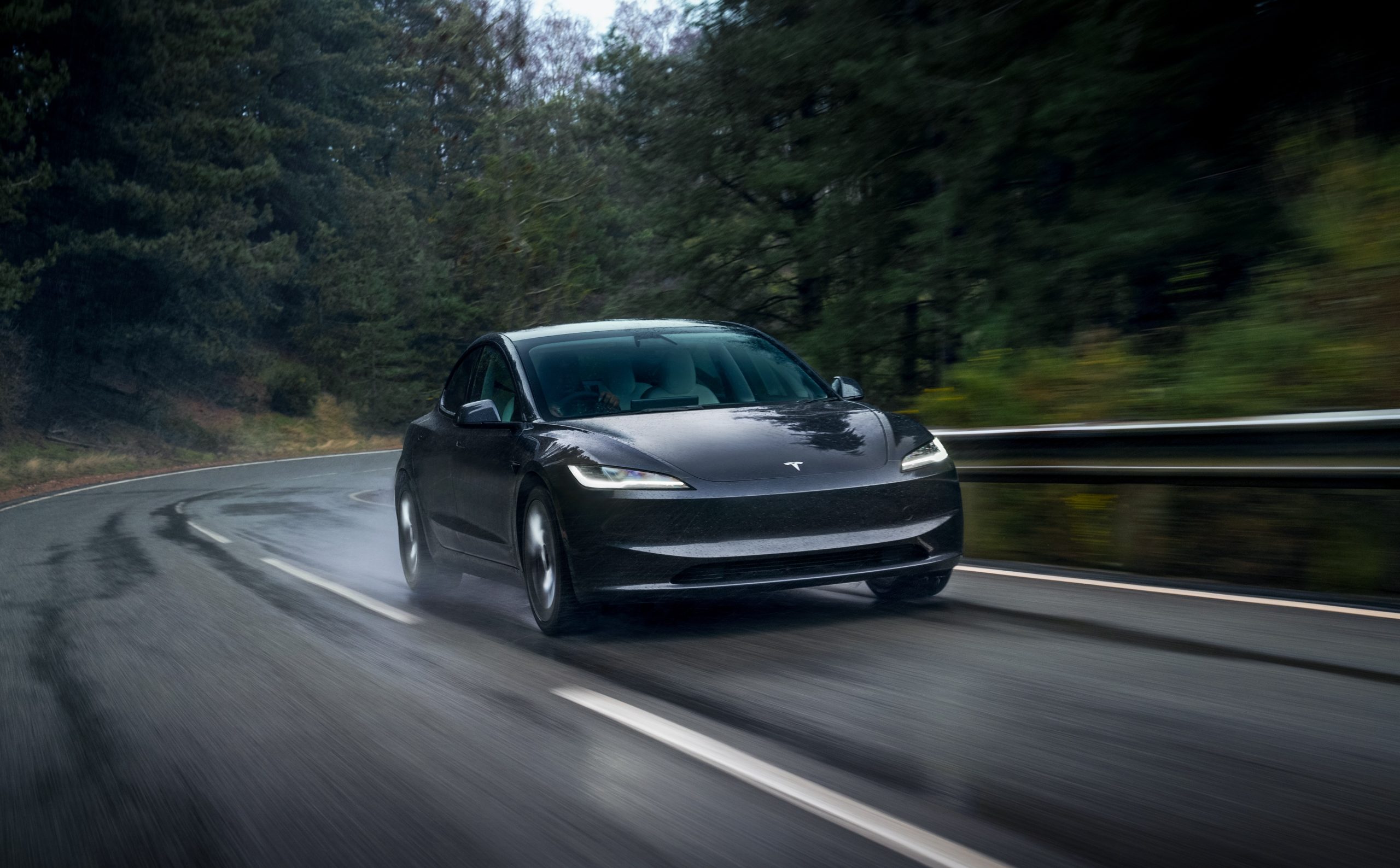
The Tesla Model 3 recently captured the title of “most economical electric vehicle to own” in a new study performed by research firm Zutobi.
Perhaps one of the biggest and most popular reasons people are switching to EVs is the cost savings. Combining home charging, lower maintenance costs, and tax credits has all enabled consumers to consider EVs as a way to save money on their daily drivers. However, there are some EVs that are more efficient and cost-effective than others.
Tesla police fleet saves nearly half a million in upkeep and repair costs
Zutobi‘s new study shows that EV cost-effectiveness comes at different levels. For example, some cars are simply better than others on a cost-per-mile basis. The study used a simple process to determine which EVs are more cost-effective than others by showing how much it would cost to drive 100 miles.
National averages for energy rates have been used to calculate the cost as they widely vary from state to state.
The Rear-Wheel Drive Tesla Model 3 was listed as the most economical vehicle in the study:
“The standard Tesla Model 3 is the most economical electric vehicle to drive in 2025. With a usable battery capacity of 57.5 kWh and a real-world range of 260 miles, it costs just $3.60 to drive 100 miles. That translates to an impressive 2,781 miles per $100 of electricity—making it the most efficient choice for EV owners nationwide.”
It had an estimated cost of just $3.60 to drive 100 miles.
The Tesla Model 3 Long Range All-Wheel Drive was second, the study showed:
“Next is the Long Range version of the Model 3, which offers extended range and dual-motor all-wheel drive. With a larger 75 kWh battery and 325 miles of range, the cost to drive 100 miles is slightly higher at $3.75, still equating to a strong 2,665 miles per $100.”
This version of the Model 3 had a price of just $3.75 to drive 100 miles.
In third, the BMW i4 eDrive35 surprised us with a cost of just $4.12 to drive 100 miles:
“Rounding out the top three is the BMW i4 eDrive35, with a 67.1 kWh battery and a real-world range of 265 miles. Drivers can expect to pay $4.12 per 100 miles, which still allows for 2,429 miles per $100—a solid choice for those seeking luxury and efficiency.”
Several other Teslas made the list as well. The Model 3 Performance ($4.34 per 100 miles) was sixth and tied with the Volkswagen ID.3 Pure, the Tesla Model S Long Range ($4.35 per 100 miles) was 8th, and the Tesla Model Y Long Range was ninth ($4.36 per 100 miles).
Elon Musk
Tesla offers new discounts on Cybertruck inventory
Tesla is knocking up to $10,550 off of Cybertruck units in inventory
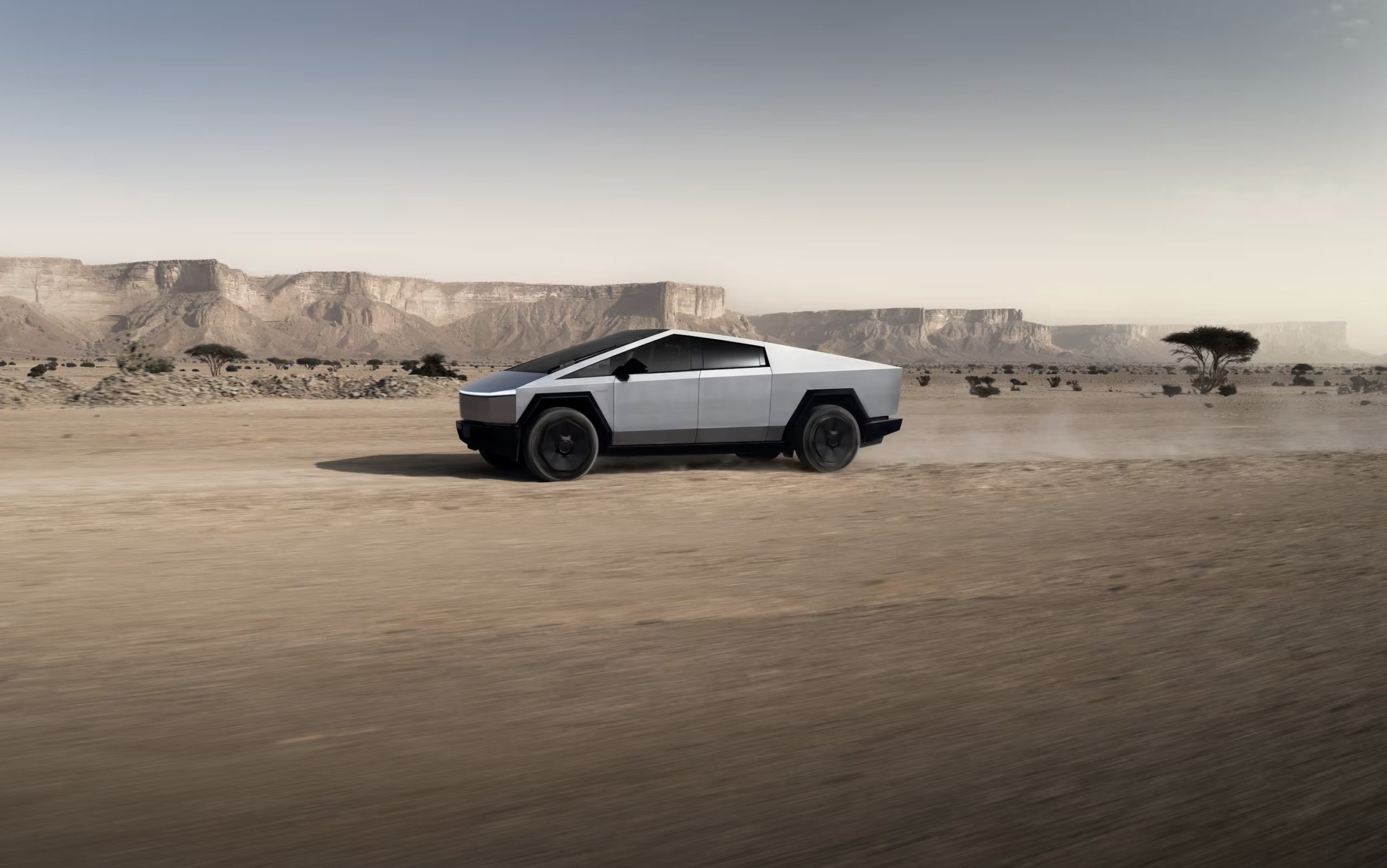
Tesla is offering new discounts on Cybertruck units in inventory, giving customers a chance to snag a unit of the all-electric pickup for a slight reduction in price. Some are even coming with additional perks to make the offer even sweeter.
Tesla is now offering up to $10,550 off of Cybertruck inventory units across the United States. This is up from previous discounts of $6,000 on inventory Cybertrucks, and it will apply to 2024 model year vehicles.
Non-Foundation Series Cybertrucks are getting up to $10,550 off of their original prices, while Foundation Series pickups are getting up to $10,000 off. These are great deals and should help clear out some inventory from last year’s models.
Additionally, Foundation Series Cybertrucks purchased will receive free lifetime Supercharging, another great addition to make the deal even better than the $10,000 off.
NEWS: Tesla is now offering new Cybertruck inventory discounts in the U.S. of up to $10,550 off, up from $6,000 before.
• Non-Foundation Series (2024 model year): Up to $10,550 off
• Foundation Series (2024 model year): Up to $10,000 offAnyone who purchases a new Cybertruck… pic.twitter.com/8oGT6R2DDp
— Sawyer Merritt (@SawyerMerritt) April 17, 2025
The move comes as Tesla is still ramping Cybertruck production and is hoping to stimulate some additional demand for the vehicle, as it is holding on to these units. These are not Demo Drive units that have been driven by any number of people who were looking for a quick test drive.
Tesla launched a new configuration of the Cybertruck just last week with the Long Range Rear-Wheel-Drive, which undercuts the All-Wheel-Drive option by roughly $10,000.
Tesla released the Cybertruck RWD to make the AWD look like a deal
However, Tesla stripped the vehicle of several features, including Air Suspension, a tonneau cover, and interior features. For example, the Rear-Wheel-Drive trim of the Cybertruck has textile seats and no rear touchscreen, two things that come standard in the other trim levels.
The Cybertruck is the best-selling electric pickup in the United States, outperforming formidable competitors like the Ford F-150 Lightning and Chevrolet Silverado EV. However, Tesla is still working to get the vehicle to a lower price point that makes it more accessible to consumers, as its current pricing is a far cry from what was intended.
-
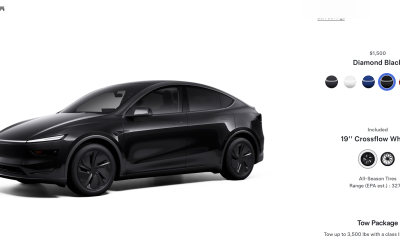
 News2 weeks ago
News2 weeks agoTesla rolls out new, more affordable trim of the Model Y Juniper in U.S.
-

 Elon Musk2 weeks ago
Elon Musk2 weeks agoTesla Germany reports 4,935 units sold in Q1 2025
-
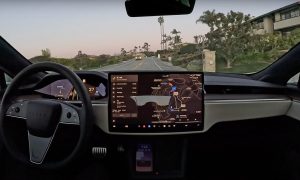
 News2 weeks ago
News2 weeks agoTesla expands Early Access Program (EAP) for early Full Self-Driving testing
-
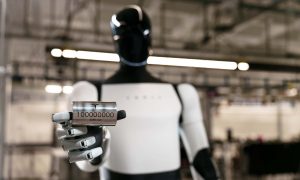
 News2 weeks ago
News2 weeks agoTesla celebrates key milestone for 4680 battery cell production cost
-

 News2 weeks ago
News2 weeks agoElon Musk will continue as DOGE adviser: VP Vance
-

 Elon Musk2 weeks ago
Elon Musk2 weeks agoNeuralink’s Patient Registry is now open globally
-
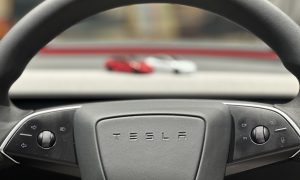
 Investor's Corner2 weeks ago
Investor's Corner2 weeks ago“Nothing Magnificent about Tesla (TSLA),” claims Jim Cramer
-
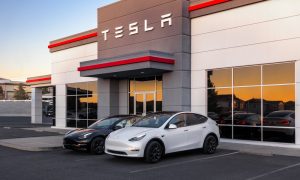
 Elon Musk2 weeks ago
Elon Musk2 weeks agoThis Tesla vandal caused thousands in damage, but she was let off the hook: Here’s why

